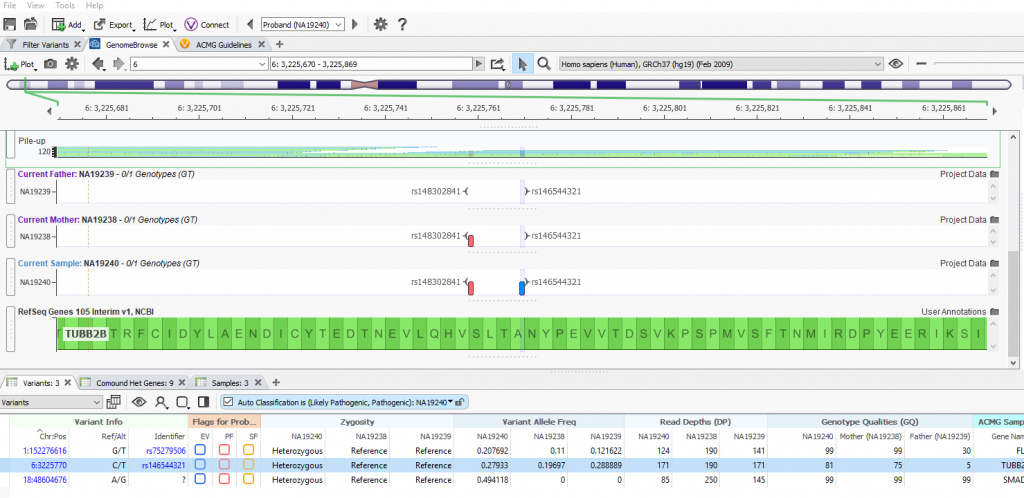Our Support Team curates a variety of tutorials to help orient new users to the capabilities of VarSeq. We are happy to announce the team’s new release of the trio tutorial that places emphasis on using the ACMG guidelines. This tutorial gives insight into the proper setup of pedigree structure as well as detailed descriptions of the filter containers and how to render clinical reports using the ACMG guidelines. This release also incorporates the use of the ACMG Guidelines Trio Template that can be utilized when creating a new project, which is a great preface to our upcoming webcast where we will be discussing these templates and unique annotations and algorithms that can be used to enhance your variant analysis.
This tutorial is based on evaluating VCF files from Mother, Father and proband and starts by using the ACMG Guidelines Tio Template. This template incorporates filter containers for different inheritance models, which can be seen in Figure 1. For those that are new to VarSeq or are curious about the filter set up, this tutorial provides unique insights and descriptions on how to interpret the results.

In addition to explaining the different filtering logics, the tutorial provides techniques for visualizing variants for inheritance patterns using features such as the integrated GenomeBrowse as shown in Figure 2 below, as well as explaining the compound het algorithm using the Compound Het Genes table. Furthermore, this tutorial illustrates how to use the variant table to show, for example, that a heterozygous allele in the proband that is a reference or missing in the Mother and Father is likely to be a De novo variant.

This tutorial also discusses the setup of VSClinical, including creating assessment catalogs and evaluating a SMAD4 variant using the ACMG Guidelines. We cover how to answer ACMG scoring criteria and how to include relevant literature into the interpretation. Lastly, this tutorial provides instructions for creating the clinical report, like the example in Figure 3, using the automated lookup feature.

The trio tutorial will provide a strong knowledge base for any user new to VarSeq and may provide helpful insights for current users of the software. Overall, we hope you enjoy the tutorial and, as always, please let us know if you have any questions or comments below!